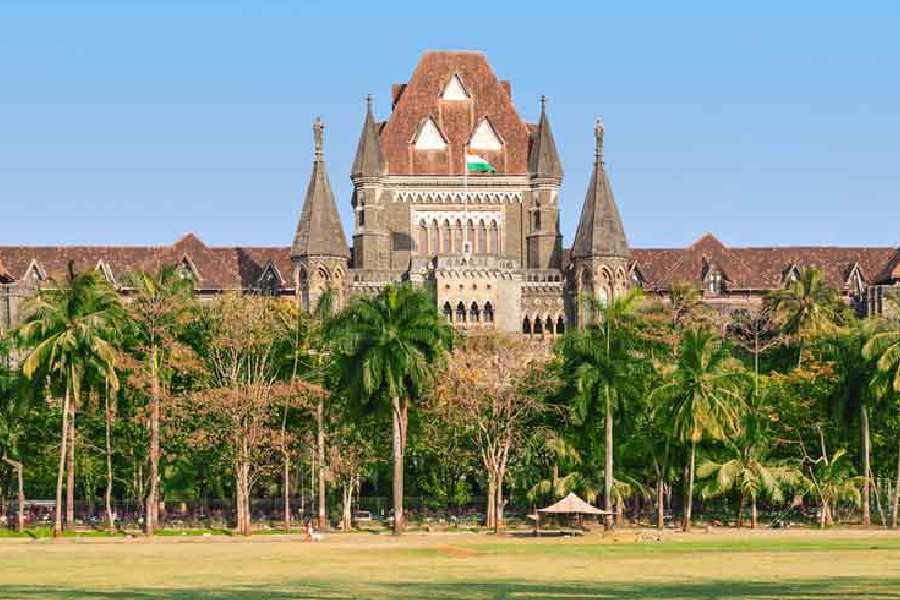 |
| Chef Subroto Goswami at work at the Guchhi interactive kitchen and (below) glimpses of the menu. Pictures by Sanjoy Chattopadhyaya |
 |
If the north Indian food platter is all too familiar to a city exposed to an explosion of eateries, keeping the menu authentic yet interesting is the biggest challenge of a speciality restaurant.
Guchhi, the Indian destination at the Hyatt Regency, faces that challenge head on. Saying a firm no to fusion food, the sprawling outlet does its best to delve deep into the region’s varied palate.
“When we say authentic, we mean typical of that region in every way. There is no concept of fusion food on our menu. We believe in serving only the original,” says Subroto Goswami, executive chef of the Salt Lake hotel.
There are few exceptions made for local taste-buds. Paturi and Doi Maachh are the concessions to local flavour, while Gosht Vindaloo traverses the distance from Goa. “People want to find a local taste on the menu. There is no avoiding Doi Maachh or Paturi when you are running a restaurant in Calcutta,” smiles Subroto.
Otherwise, Guchhi keeps the north firmly in focus. “A speciality restaurant represents the cuisine of a particular region. Playing around with food can result in diluting it. We try to maintain the originality of the cuisine by using the right kind of ingredients and following the right methods,” stresses the chef.
So, whether it is Murgh Makhanwala or Adaraki Chaap, Aloo Hara Pyaz or Hyderabadi Mirchi, the recipes are authentic, according to this five-star address.
With much deliberation going into every inclusion, the culinary journey takes in much more than kebabs, tikka masala and dal that is found here, there and just about everywhere.
“If there is a need for a new item on the menu, we try to find out what will add maximum variety. The management and kitchen crew sit down to sift through ideas. Then, the new entries are run by a selective list of guests. Based on everybody’s reactions, we decide whether to include a particular item or not,” he explains.
That inclusiveness is mirrored in the open kitchen, a compulsory feature at all Hyatt restaurants. If some privileged patrons define the items seen on the final menu, even first-time walk-ins are invited to participate in the process of creation.
Watch the chef de-bone a leg of lamb for Raan-e-Guchhi, or smell the smoke escaping from a clay oven laden with aromatic lobster marinated in cream and cheese. Dinner at Guchhi is a feast for much more than just the stomach.
“We try to make the entire experience interesting by letting the guest take a peep into the interactive kitchen. They are also encouraged to give their suggestions,” says Subroto.
The items that call for slow cooking are half-cooked ahead of time, with the finishing touches being given before the guests’ hungry eyes. “Lentils and grams take at least one-and-a-half hours of cooking. No guest has so much time.”
Other slow delights include raan, a favourite from the north. The leg of lamb is first braised. The meat is then removed from the bone, skewed and roasted in the oven, and then rearranged over the bone before serving. For Rarra, lamb is marinated in spices and hung curd and cooked over a very slow flame.
The large number of vegetarian guests has led to a well-rounded menu, with morels ?or guchhi, the exotic mushrooms which give the restaurant its name ? occupying pride of place. Guchhi Matar Chaunkdar is the signature dish, in which Kashmiri morels and green peas are cooked in onion, tomato and masala.
Overkill has been avoided, but there are a couple of morel options in the list of appetisers as well as in the main course.
Apart from these, Dahi Ke Kebab is the favourite appetiser, and Paneer Tikka is almost a staple. Guchhi Dal, Kashmiri Aloo and Methi Malai Matar are fast-movers in the main course.










